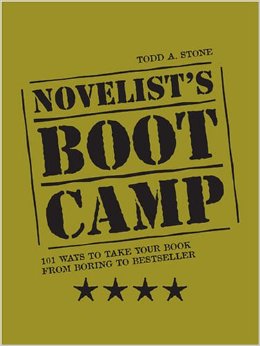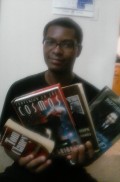Planning (Or Not!) A Novel

The Many Methods of Outlining
Every author has a different writing style. And every person has a different way of planning, be it 'planning a novel' or 'planning the weekend'. Do you prefer hours researching every detail? Or the wild abandon of making everything up as you go along? From snowflakes to pantsing, here's a roundup of ways to plan your next great novel.
The Three-Act Method
The three-act method focuses on planning a novel focusing by breaking it into three major parts. Usually, the parts are setup, confrontation or conflict, and resolution. This structure is more famous for its association with films and plays than novels, but it works for novels as well. After all, an interesting novel needs conflict (and resolutions to conflict) as much as films do.
The three-act structure is also useful for individual chapters or scenes, even if you don't use it to plan an entire novel. A scene with no conflict can be boring for the readers, and one with no resolution can be frustrating. Keeping the three-act structure in mind while writing prevents these problems.

The Index Card Method
The classic straightforward and simple method of planning:
- Get a huge stack of index cards (or post-it notes, if you'd rather stick things to a wall than spread them around the floor).
- Every idea gets an index card. Scenes, settings, characters, all get cards.
- Spread everything out so you can see every idea.
- Rearrange the whole pile until it turns into something cohesive.
- Try to keep things in order until you finish writing.
This is a fluid and organic method of planning. It allows you to get every idea out, even the ones which seem ridiculous at the time. You don't need a place for them to fit right away, so jot them down anyway and see if they find a place later. Maybe the post-it note about your MC being mistaken for a cab driver will end up getting tossed after it just doesn't fit anywhere else. But it could also open a whole new story idea when you see it next to a note about a secondary character losing their phone.
The Phases of the Hero's Journey
Campbell's original version of the Hero's Journey had seventeen phases. Other authors have adapted it to have as few as eight. Here's the version presented by Christopher Vogler in The Writer's Journey:
- Ordinary world
- Call to adventure
- Refusal of the call
- Meeting with the mentor
- Crossing the first threshold
- Tests, allies, enemies
- Approach
- Central ordeal
- Reward
- The road back
- Resurrection/Climax
- Return with the elixer
The Hero Method
The monomyth, or Hero's Journey, is a basic pattern found in many stories, as far back as ancient mythology and as recently as modern movies. Joseph Campbell discovered the pattern while looking for commonalities in the mythology of different cultures.
The Hero's Journey includes the setup, conflict, and resolution you would find in a three-act story. The Journey follows a more precise path than three acts, though. This makes it useful for brainstorming ideas for key scenes at important points throughout your story.
The Hero's Journey also references other characters, such as mentors, guardians, and tricksters. These archetypes can help flesh out your cast of characters, making your story more interesting than if it focused on only one.
The Snowflake Method
The Snowflake method, created by author Randy Ingermanson, is especially popular among NaNoWriMo participants. It's a simple ten-step method which begins with a single sentence describing your story idea. Finishing all ten steps can take a while, but you'll have several pages of useful story planning after only the first few steps. By the ninth step, you could have fifty pages or more of plans and notes! You can always stop early without feeling like the time already spent planning is wasted, though. I've never gone past step five, but I still find the Snowflake method an excellent way of planning.

The Bootcamp Method
Like the Snowflake method, the novel-writing method of Novelist's Boot Camp can take a long time to complete. Unlike the Snowflake, NBC also carries you through writing and editing the novel. (The Snowflake does include writing a first draft in step 10, but there's no editing steps at all.) Early 'drills' in the book focus on the parts of novel-planning which come before even the story idea, such as making time to write. Other drills include advice on making the book the best it can be.
When it comes to actual novel outlining, NBC will result in a sparser outline than the Snowflake, but they have many overlaps in the important parts. Snowflake may be preferable if your entire novel-writing struggle is in the structure of the novel itself. NBC will help if you can get the fine details of an outline on your own, but you're struggling with other aspects. Combining the two might be overkill as far as planning goes, but a particularly thorough author could do it.
For those who work best under a tight schedule, Novelist's Boot Camp includes a twelve-week writing plan. Aspiring writers are also encouraged to go through the drills at whatever pace best works for finishing the novel.
Pantsing vs. Planning
Do you plan your stories? Or do you make things up as you go along?
Pantsing: The Low-Plan Method
'Pantsing' (so called because you're 'writing by the seat of your pants') is yet another way to write a novel. By definition, pantsing is the method with the least planning and greatest freedom. It allows you to explore your best ideas, rather than tying yourself to whatever seemed like a good idea a month ago. (On the flip side, it also leaves you without a road map if you get stuck…)
Depending on the story and author, some people still do some pre-writing planning. Planning a seat-of-the-pants book, though, doesn't focus much on major plot or character development. And it's a far cry from planning as in-depth as the Snowflake method.
More Information on Novel-Planning Methods
- What is Three Act Structure?
Another article on the three-act structure, with several examples showing how conflict and complications move stories along. - How the Hero’s Journey Can Help You Become a Better Man
This is more a self-help article than a writing article, but it shows the Hero's Journey applied to a mundane, everyday part of life. If it works for going to the gym, it'll work for even slice-of-life stories. - Advanced Fiction Writing
The writing website of Randy Ingermanson, creator of the Snowflake method. This website contains not only an in-depth explanation of the Snowflake method, but plenty of other useful information for writing and marketing a novel. - 6 Secrets of Writing a Novel Without an Outline
Great tips for ensuring your novel is well-written without the need to have a well-written outline.





